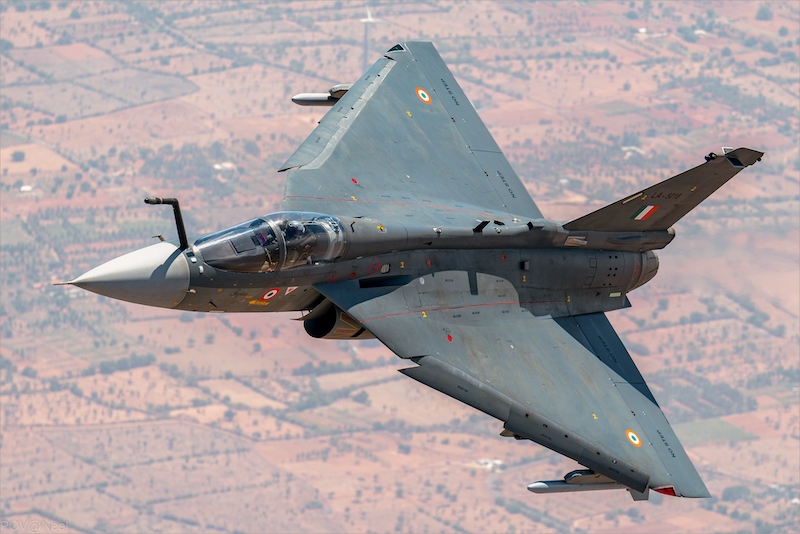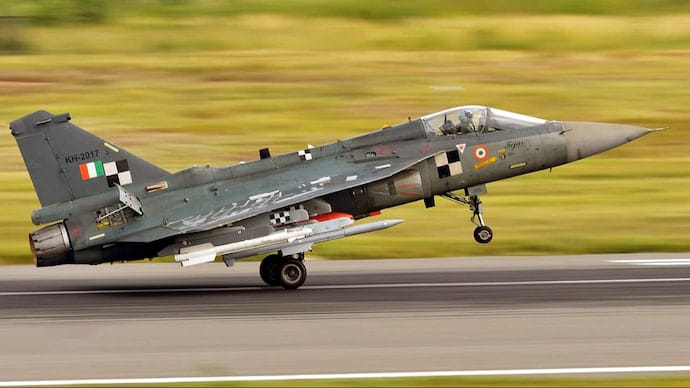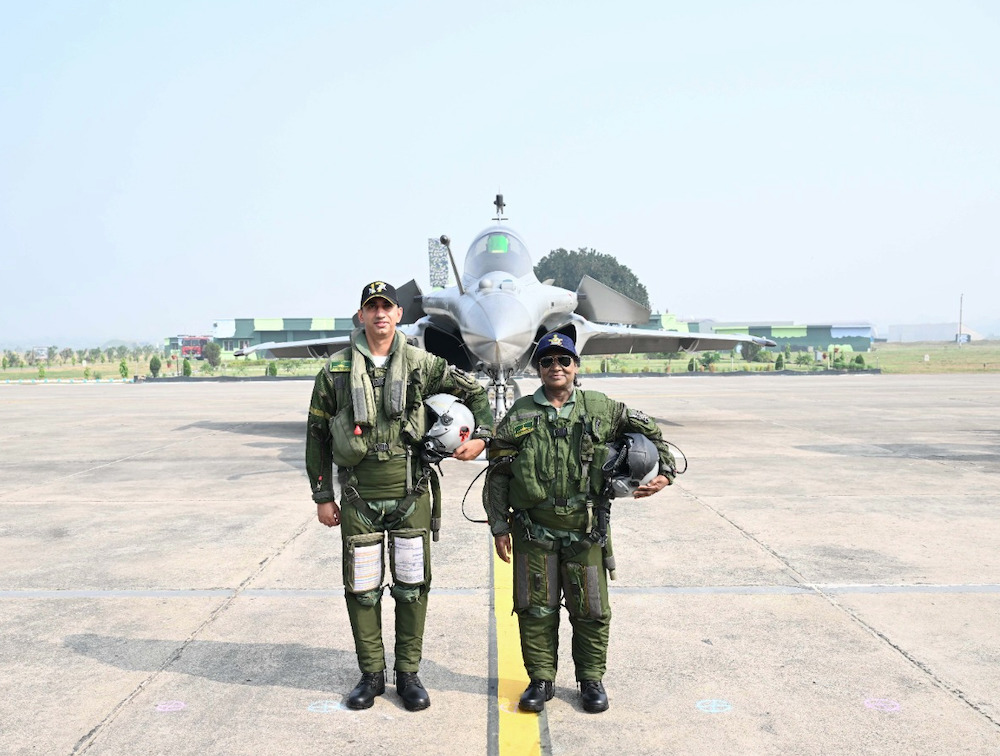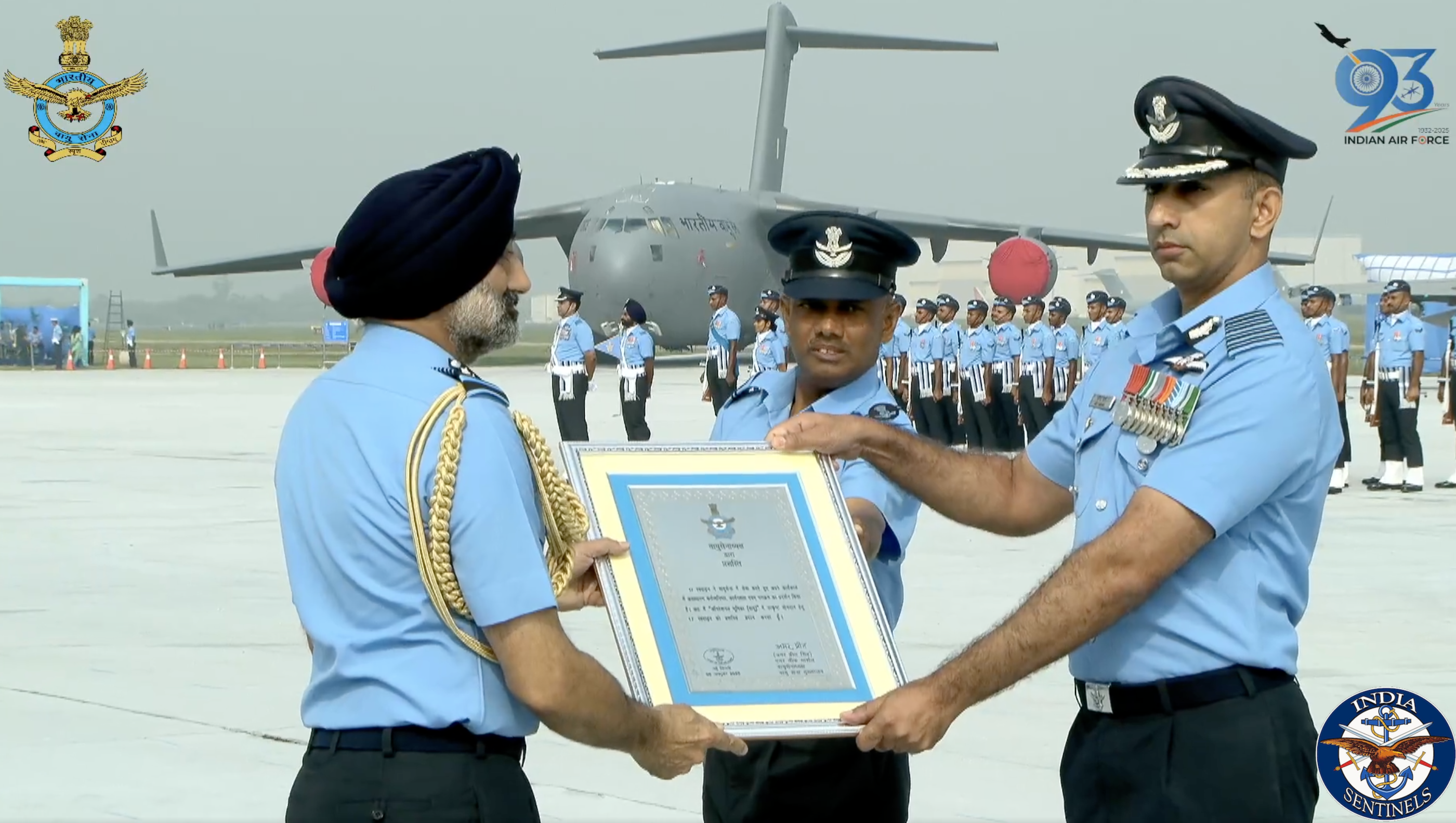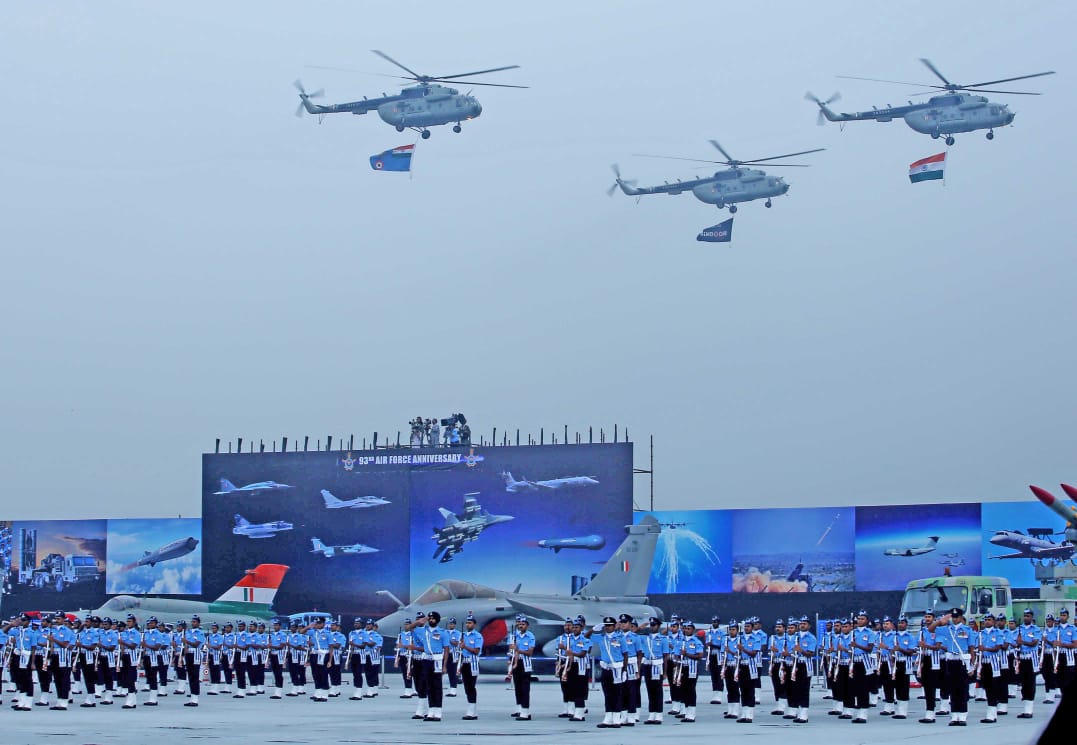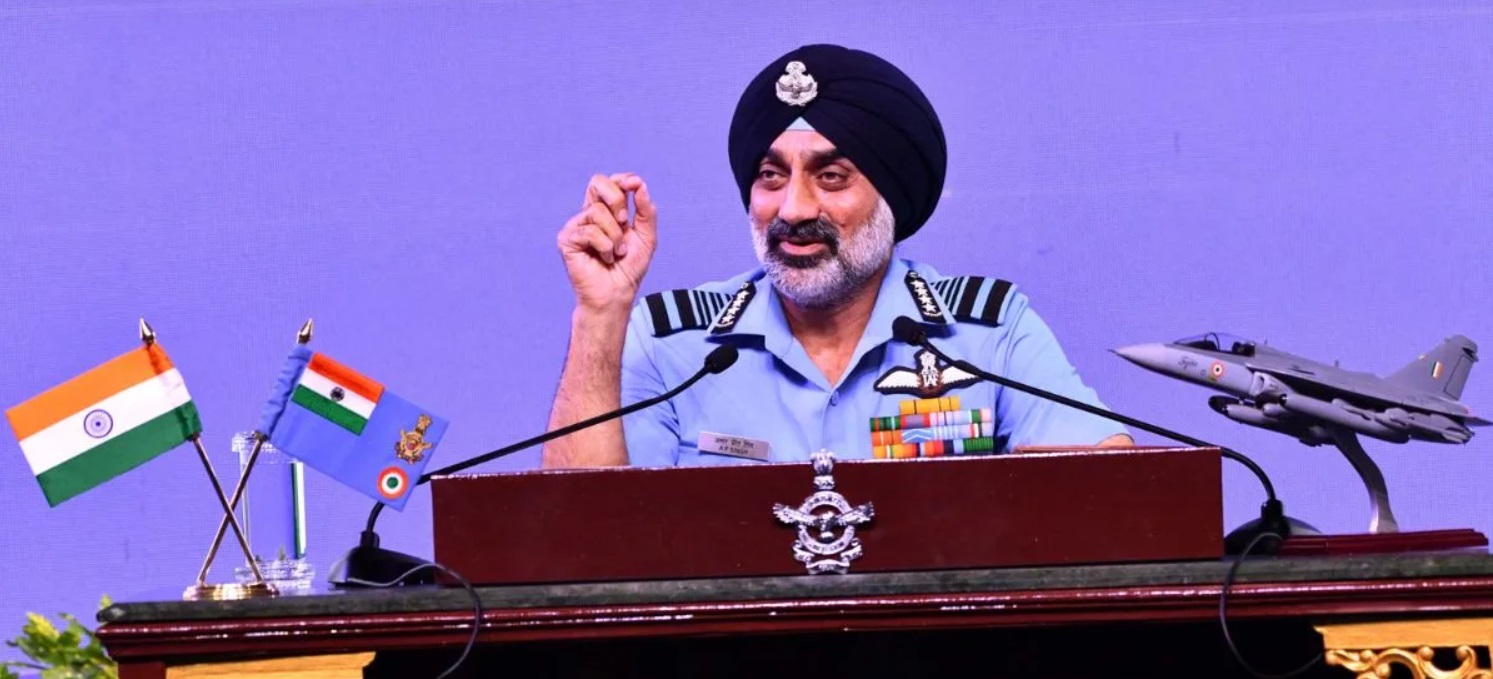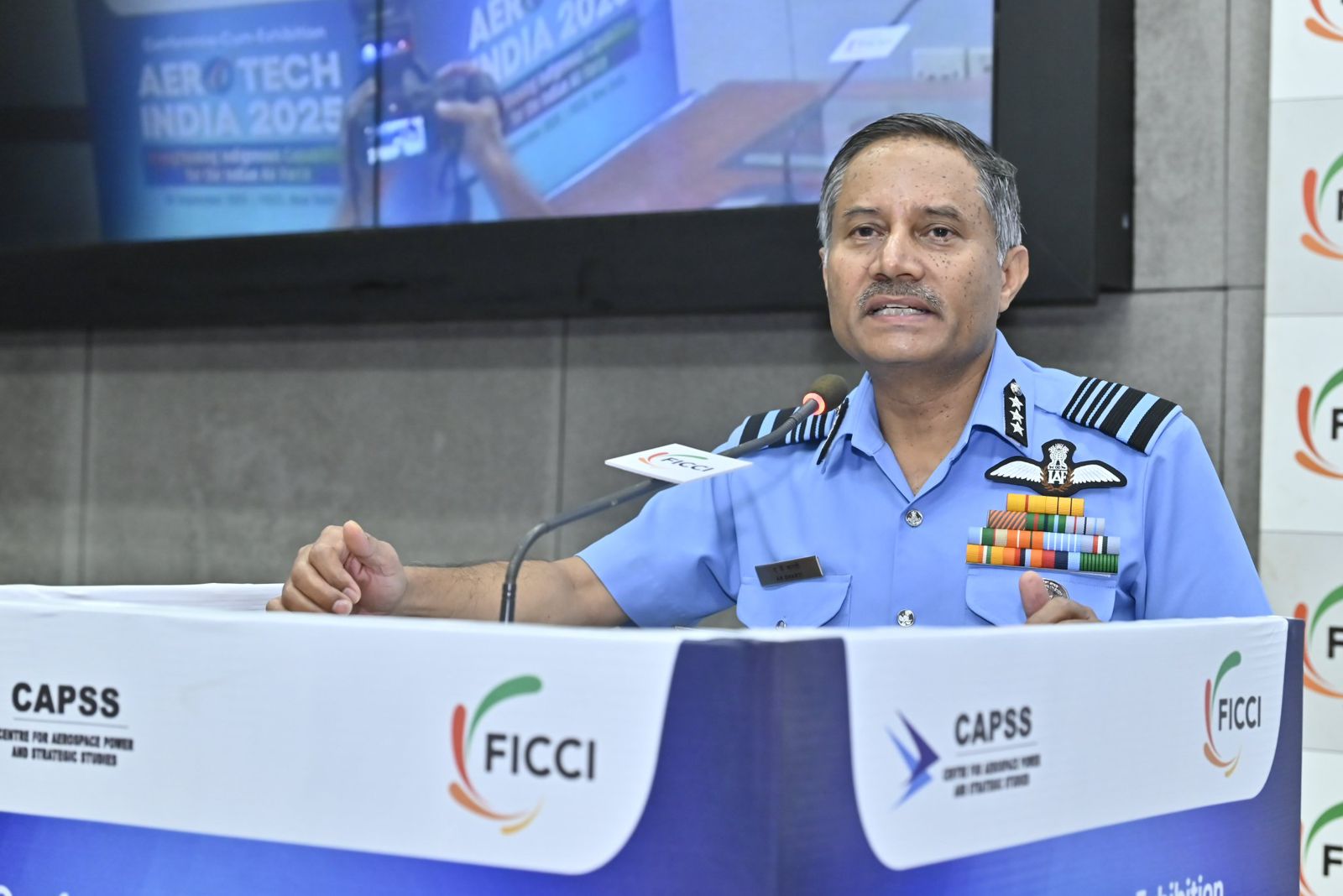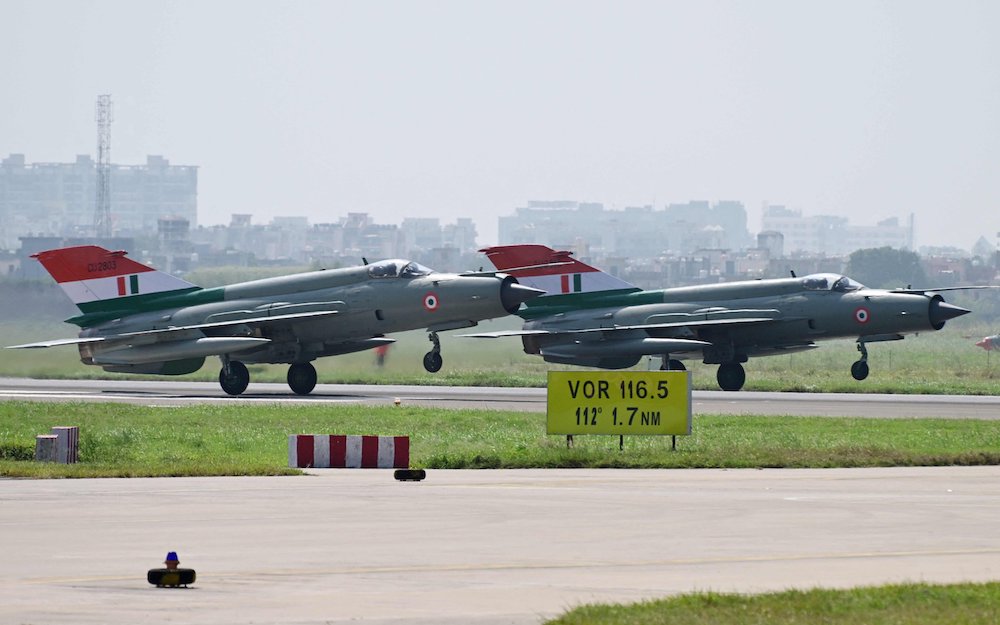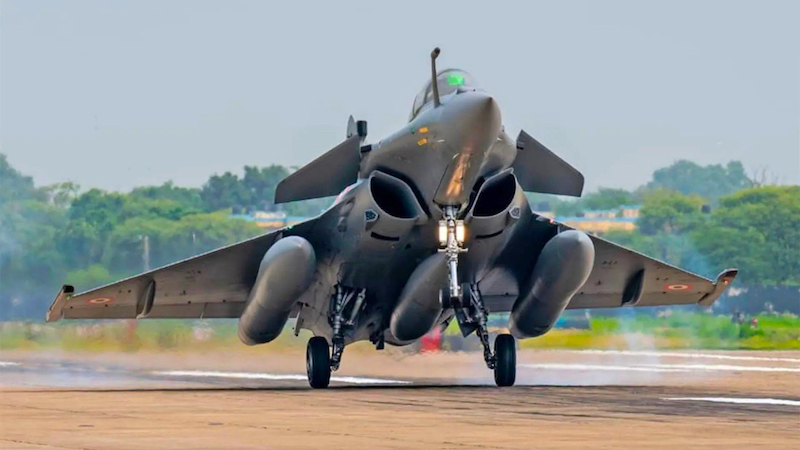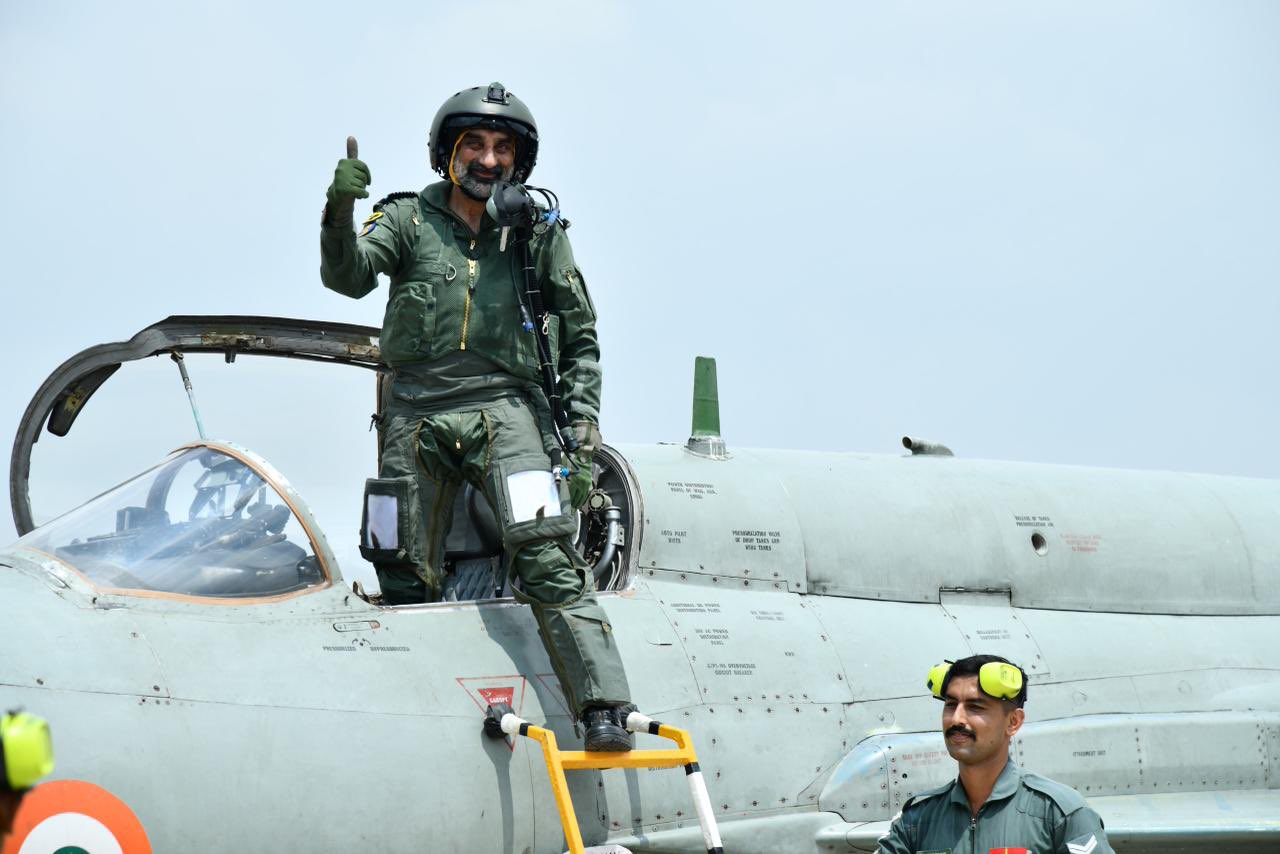 Air Chief Marshal Amar Preet Singh on a MiG-21 Bison at the Nal airbase in Rajasthan, on August 25, 2025. (Photo: Indian Air Force)
Air Chief Marshal Amar Preet Singh on a MiG-21 Bison at the Nal airbase in Rajasthan, on August 25, 2025. (Photo: Indian Air Force)
Nal Air Force Station/New Delhi: The chief of air staff, Air Chief Marshal Amar Preet Singh, conducted his final flights in India’s MiG-21 fighter aircraft on Monday. This marked the symbolic beginning of the end for the Indian Air Force’s most enduring combat platform.
ACM Singh flew solo sorties from Nal Air Force Station in Bikaner, Rajasthan, as part of farewell ceremonies for No. 23 Squadron “Panthers”, the last operational unit flying the Soviet-origin fighter. The IAF chief also flew in formation with Squadron Leader Priya, one of the IAF’s women combat pilots.
The MiG-21 will be formally retired on September 26, 2025, at Chandigarh Air Force Station, where it first entered service in 1963. The retirement ends a 62-year operational history that spans nearly two-thirds of the IAF’s existence.
Six decades of combat legacy
The MiG-21 first joined the IAF with No. 28 Squadron “The First Supersonics” at Chandigarh, commanded by Wing Commander Dilbagh Singh. Originally developed by the Soviet Union’s Mikoyan-Gurevich Design Bureau in 1955, it became India’s first supersonic fighter and first non-Western combat aircraft.
India acquired over 850 MiG-21s, with nearly 600 manufactured under licence by the Hindustan Aeronautics Limited. At its operational peak in the 1980s, the IAF operated 874 MiG-21s, making it the largest operator of the fighter outside the Soviet Union.
The aircraft participated in every major conflict involving India since 1963. During the 1965 Indo-Pakistan war, No. 23 Squadron achieved the IAF’s first aerial victory when Squadron Leader Trevor Keelor shot down a Pakistani F-86 Sabre on September 3, 1965, earning him the Vir Chakra.
The MiG-21’s most significant combat role came during the 1971 Bangladesh Liberation War, where it achieved air superiority in the western theatre. The conflict featured the first supersonic air combat in the subcontinent, with MiG-21FLs claiming multiple Pakistani aircraft including F-104A Starfighters.
The upgraded MiG-21 Bison variant participated in the February 2019 Balakot airstrikes. Wing Commander Abhinandan Varthaman’s MiG-21 shot down a Pakistani F-16 before being downed, leading to a brief diplomatic crisis when he was captured and later released.
Safety concerns
Despite operational success, the MiG-21 earned the unfortunate sobriquet “flying coffin” due to its accident record. Of 872 aircraft progressively inducted, over 400 have been lost in accidents since 1971-72. More than 170 Indian pilots and 60 civilians have died in MiG-21 accidents.
ACM Singh acknowledged the safety concerns: “The technology is now outdated and difficult to maintain. It is time to move to new platforms such as the Tejas, Rafales and Su-30s.”
Aviation historian Anchit Gupta estimates nearly 2,000 IAF pilots have flown the MiG-21, collectively logging over 1.5 million flying hours – the largest trained pilot fleet for any fighter type in IAF records.
Indigenous replacement delayed
The HAL Tejas Mark 1A has been designed as the MiG-21’s direct replacement. Singh explained: “Tejas was actually designed as a replacement for MiG-21. That is why it is a small aircraft. It was designed around MiG-21, and it was conceived from some kind of motivation from Mirage.”
The IAF has contracted 83 Tejas Mark 1A aircraft with additional orders planned. However, HAL has yet to deliver a single Mark 1A despite the original March 2024 delivery schedule.
The retirement will reduce the IAF’s fighter squadron strength to 29, the lowest in six decades, against the authorized strength of 42 squadrons. This capability gap comes as India faces potential security challenges on two fronts.
Cultural footnote
The MiG-21’s final operational flights coincided with filming of Sanjay Leela Bhansali’s upcoming Bollywood film “Love and War”, starring Ranbir Kapoor, Alia Bhatt, and Vicky Kaushal at the Nal airbase.
ACM Singh, reflecting on his first MiG-21 experience in 1985, described it as “a revelation – agile, highly manoeuvrable, and simple in design”. The aircraft could climb at more than 250 metres per second at maximum reheat, making it exceptionally effective as an interceptor.
The retirement ceremony will return the MiG-21 to its origins at Chandigarh, closing a chapter that transformed India from a recipient of foreign military technology to a developing indigenous aerospace power. The aircraft’s legacy as the IAF’s workhorse will endure, having trained generations of pilots and defended Indian airspace through multiple conflicts.


